
Cutting back on Ben & Jerry’s and Tostitos = one of the suckiest parts of dieting. But that doesn’t mean you have to go hungry. (Never!)
“People will go crazy and cut out whole food groups,” says nutritionist Jess Cording, R.D., “or be really intense with exercise without refueling appropriately. But it’s really important to give your body adequate calories and nutrients to take care of itself.”
That’s where fat-burning foods enter the equation. TBH, grapefruit or hot peppers alone will not make you shed pounds—but they are packed with nutrients that will keep you full and fueled on your weight-loss journey. Your Instacart order awaits.

Getty Images
Nuts and nut butters
“Nuts have healthy fat, fiber, and protein, which is a great combo to keep you energized and satisfied,” says Cording.
A quarter-cup of whole nuts or two tablespoons nut butter is a good max serving for most people. That many whole almonds, for example, nets you 200 calories, seven and a half grams of protein, 18 grams of filling monounsaturated and polyunsaturated fats, and four and a half grams of fiber, per the USDA.
Cording adds that some nuts (like walnuts) boast a tiny dose of ALA, an omega-3 fatty acid that may help tame inflammation.
Almond butter (2 Tbsp): 190 cal, 18 g fat, 6 g carbs, 1 g sugar, 0 mg sodium, 3 g fiber, 7 g protein
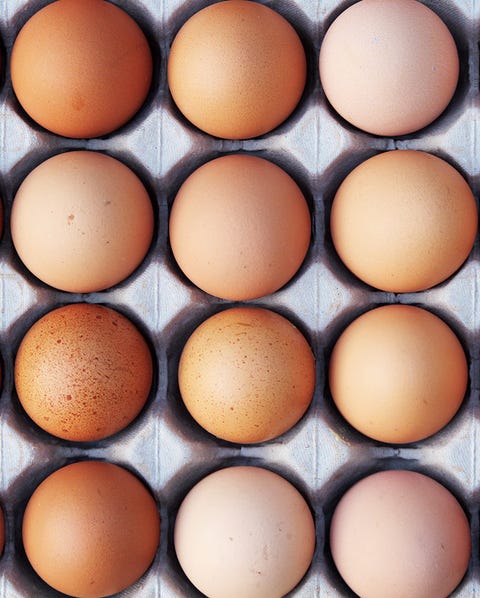
Getty Images
Eggs
Another great source of protein (six grams) and healthy fats (five grams), Cording says eggs help keep you satisfied and energized so you can maintain muscle while you’re burning fat.
“They’re instant portion control,” she says, “which is handy when you’re trying to lose weight. You know that one large egg nets you 70 calories.”
Plus, eggs have choline, which supports brain health, as well as DHA, which is anti-inflammatory. Just be sure to double-check the label for “DHA.”
Per 1 large egg: 72 cal, 4.75 g fat, 0.36 g carbs, 0.18 g sugar, 71 mg sodium, 0 g fiber, 6.28 g protein

Getty ImagesGeorge Coppock
Milk
Milk offers tons of bone-building calcium (300 mg in one cup) and animal protein (eight grams)–and you don’t have to choose the low-fat varieties to enjoy those benefits.
In fact, Cording recommends opting for 2 percent or whole milk. “You’ll get more calories, but it tends to be more satisfying,” says Cording. “You actually absorb some of the nutrients better, including vitamins D and A, if there’s some fat in there.”
Per 1 cup whole milk: 161 cal, 8 g fat, 13 g carbs, 12 g sugar, 125 mg sodium, 0 g fiber, 8 g protein

Getty ImagesAtw Photography
Yogurt
The probiotics in yogurt can support a healthy gut and your overall wellness. “When your immune system is working well, your gut and brain talk to each other. If you struggle a lot with stress eating, maintaining good digestive health helps nourish a healthy gut so you feel calmer and avoid stress eating,” says Cording. Similar to milk, your best bet is to skip the low-fat varieties—go for full-fat Greek yogurt or Skyr instead.
Per 1 cup full fat Greek yogurt: 230 cal, 11 g fat, 9 g carbs, 5 g sugar, 80 mg sodium, 1 g fiber, 22 g protein
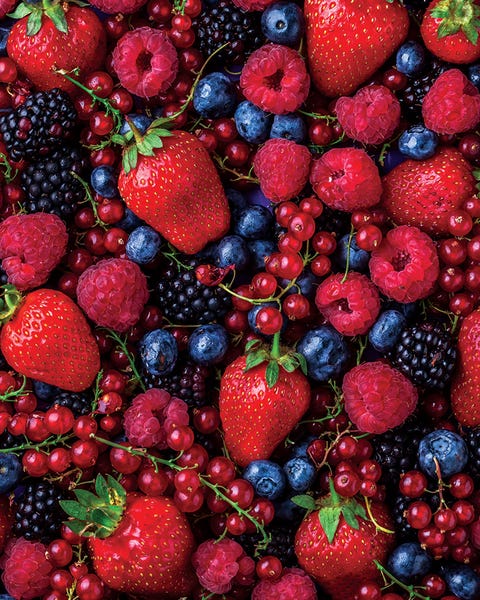
Getty Images
Berries
Because they’re loaded with fiber, these sweet treats help improve satiety and reduce cravings as you’re burning fat. In one cup of blueberries, for example, you get fewer calories (about 84) and more grams of filling fiber (3.6) than in one large banana.
“Berries take up lots of space on a plate, so they’re visually satisfying,” says Cording.
What’s more, colorful raspberries, blueberries, and blackberries are all loaded with anti-inflammatory antioxidants that help support your immune system.
Raspberries (1 cup): 64 cal, 1.48 g fat, 14.69 g carbs, 5.44 g sugar, 1 mg sodium, 8 g fiber, 1.48 g protein
Blueberries (1 cup): 84 cal, 0.49 g fat, 21.45 g carbs, 14.74 g sugar, 1 mg sodium, 3.6 g fiber, 1.10 g protein
Blackberries (1 cup): 126.94 cal, 0.71 g fat, 13.84 g carbs, 7.03 g sugar, 1 mg sodium, 7.6 g fiber, 2 g protein
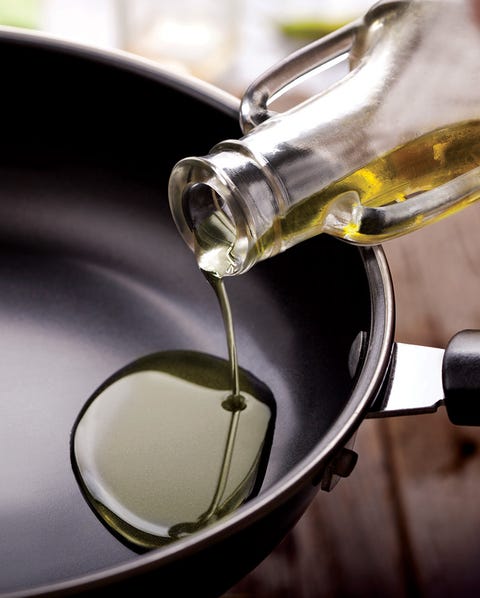
Getty Images
Olive oil
All cooking oils (with the exception of coconut oil) are chock full of monounsaturated fats, at about 14 grams per tablespoon, to promote fullness and keep you from mindlessly snacking. But olive oil is Cording’s all-around favorite option.
“It’s very satisfying and very versatile, and there’s lots of research around its benefits,” she says. She recommends it for basically any kind of cooking except frying, since it’ll smoke up your kitchen.
Per 1 Tbsp: 120 cal, 13 g fat, 0 g carbs, 0 mg sodium, 0 g protein
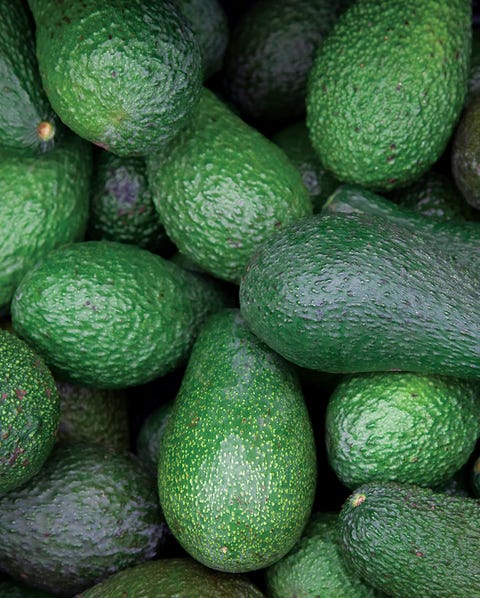
Getty Images
Avocados
“Avocados are a really great combination of monounsaturated fats plus tons of fiber, which helps you to stay satisfied,” says Cording. They’re also an excellent source of potassium, which helps reduce water retention and bloat—always a welcome effect when you’re trying to burn fat.
Because they’re dense in calories, the official recommended serving size is one-third of an avocado, although Cording says half of a medium fruit is perfectly fine. Time for some avo toast!
Per 1/3 avocado: 200 cal, 16.67 g fat, 10 g carbs, 0 g sugar, 300 mg sodium, 6.7 g fiber, 3.33 g protein

Getty Images
Fatty fish (salmon, tuna, mackerel)
Fish is a great option to help build muscle and keep you full. One four-ounce serving of cooked wild salmon has about 29 grams of protein for just 200 calories. Salmon also has about nine grams of fat, mostly from heart-healthy omega-3 fatty acids, which studies show may support efficient fat-burning and reduce inflammation, says Cording.
Salmon (4 oz): 206 cal, 9.21 g fat, 0 g carbs, 63 mg sodium, 0 g fiber, 28.83 g protein
Tuna (4 oz): 209 cal, 7.12 g fat, 0 g carbs, 57 mg sodium, 0 g fiber, 33.9g protein
Mackerel (4 oz): 297 cal, 20.18 g fat, 0 g carbs, 94 mg sodium, 0 g fiber, 27.03 g protein

Getty Images
Grapefruit
“Grapefruit is a very low-calorie density food, so people feel they can fill up on one as an appropriate snack,” says Cording. It’s also high in antioxidants including vitamin C and beta-carotene to support healthy immune system function. Plus, it has a ton of fiber at three grams per fruit.
Per grapefruit: 74 cal, 0.25 g fat, 18.45 g carbs, 0 mg sodium, 2.7 g fiber, 1.35 g protein

Getty ImagesATU Images
Green tea
While you can’t simply sip on green tea and expect the pounds to fall off, there is actually quite a bit of research showing that this elixir can help fire up your body’s fat-burning capabilities.
“Regular consumption of green tea has been linked to lower weight and increased calorie burn, but it’s not a huge amount,” says Cording.
But skip the supplements and extracts, which Cording says can harm your liver. Get your fix from a brewed cup instead.
Per serving: 0 cal, 0 g fat, 0 g carbs, 0 g sugar, 0 mg sodium, 0 g fiber, 0 g protein
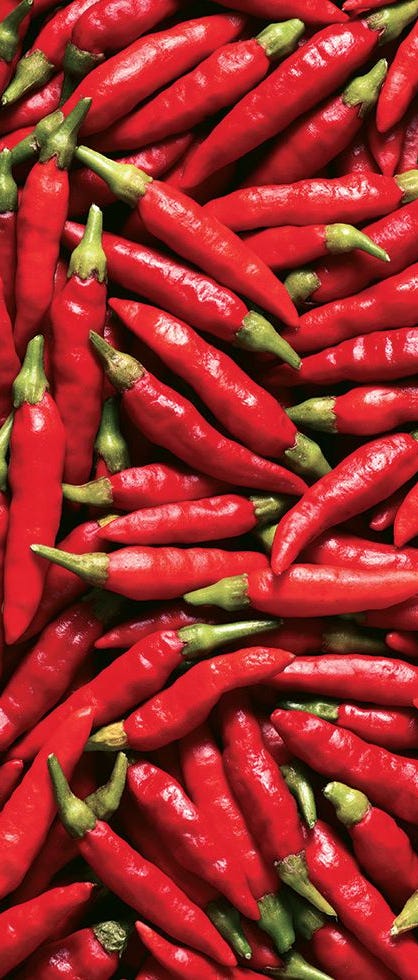
Getty Images
Chili peppers and cayenne
Capsaicin, the compound that makes chili peppers hot may mildly increase metabolic rate, research shows, which is of course welcome when you’re trying to burn fat.
“It won’t cause you to burn lots of extra calories or make you lose five pounds, but it can support a slightly higher metabolism,” says Cording. Plus, she says many of her clients find that adding heat to food with cayenne powder or full peppers helps them feel more satisfied and less likely to overeat.
Per chili pepper: 2 cal, 0 g fat, 0.2 g carbs, 0.2 g sugar, 78 mg sodium, 0.7 g fiber, 0 g protein
Per Tbsp cayenne pepper: 17 cal, 0.92 g fat, 3 g carbs, 2 mg sodium, 1.4 g fiber, 0.64 g protein
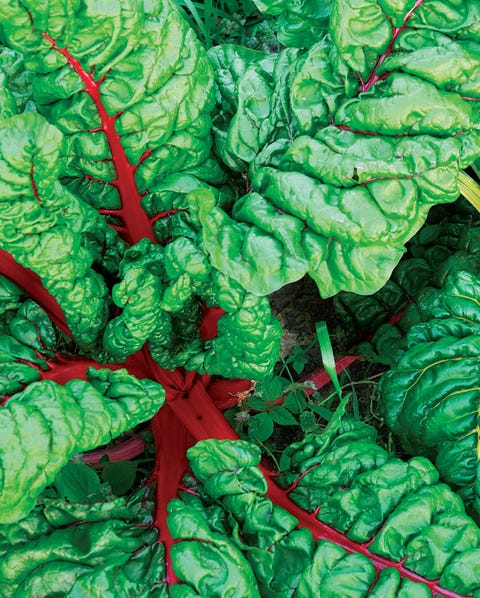
Getty Images
Dark leafy greens
Dark, leafy veggies contain loads of iron (1.6 mg, or about a tenth of your daily needs, in two cups raw spinach), which supports efficient oxygen transport throughout your body. So your green salad helps you maximize your workout by building muscle at the same time you’re burning fat, says Cording.
Per 2 cups: 7 cal, 0.12 g fat, 1.09 g carbs, 0.13 g sugar, 24 mg sodium, 0.7g fiber, 0.86 g protein
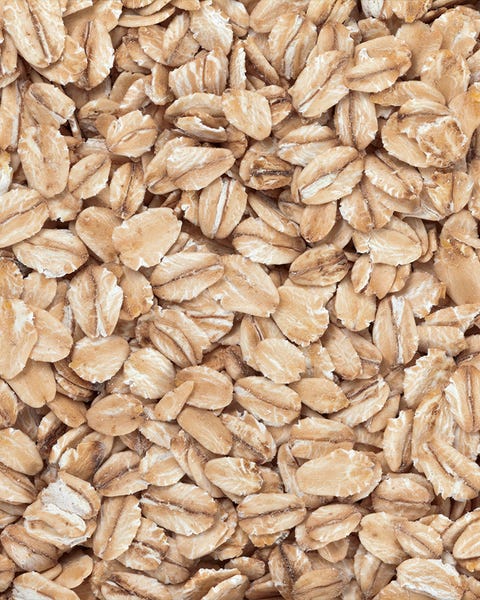
Getty images
Whole Grains (Oats, Brown Rice, Etc.)
Carbs are your body’s go-to fuel source. People often cut carbs for weight loss, but regularly eating complex carbohydrates (oats, buckwheat, brown rice) actually helps your metabolism. “You’re less likely to struggle with cravings and you body works more efficiently because you’re well-fueled,” says Cording.
Note: If you’re choosing more processed grains like bread, be sure to check the ingredients label for “100 percent whole wheat” or “100 percent whole grain,” since products simply labeled “whole wheat” have part of the healthy grain removed during processing.
Per 1 cup of brown rice: 200 cal, 1.33 g fat, 42.67 g carbs, 0 mg sodium, 1.3 g fiber, 4 g protein
Per 1 cup of oats: 280 cal, 6 g fat, 50 g carbs, 100 mg sodium, 8 g fiber, 12 g protein
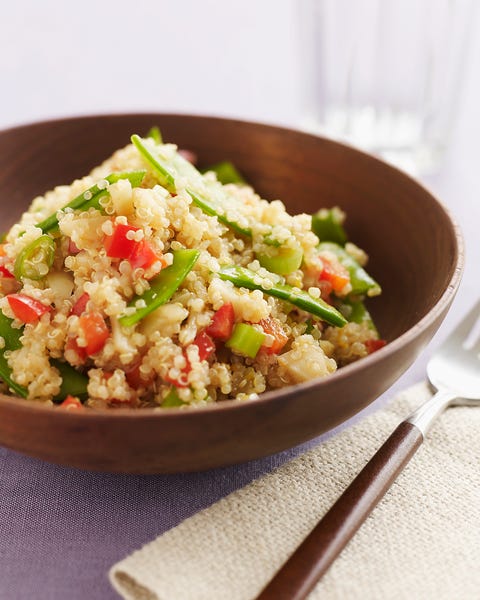
Getty ImagesAlexandra Grablewski
Quinoa
“Not only will quinoa satisfy any carb cravings, but it is also a good source of protein with six grams per serving,” says Elizabeth Hurley, R.D. And that extra protein will help you maintain your goals since it’s “crucial in maintaining muscle mass and fat loss while in a caloric deficit.”
Quinoa is also a great source of magnesium (about 60 mg per half-cup serving), which helps promote sleep—something that’s super important for weight loss.
Per 1 cup quinoa: 222 cal, 3.55 g fat, 39.41 g carbs, 13 mg sodium, 5.2 g fiber, 8.14 g protein

Getty Images
Beans and legumes
Beans and legumes are a great source of protein (seven grams in half a cup of black beans) to help build muscle, burn fat, and keep you satisfied. A massive dose of both soluble and insoluble fiber (seven grams total) also helps prevent blood sugar spikes for a slower, steadier energy burn.
“Fiber helps you build stool bulk, physically filling up your system when it interacts with water. It also helps things move more efficiently through your digestive tract, supporting digestive health,” explains Cording.
Per 1/2 cup black beans: 110 cal, 0 g fat, 21 g carbs, 10 mg sodium, 7 g fiber, 6.99 g protein

Getty Images
Whey protein
“Whey protein has been shown to support muscle repair, building, and retention,” says Cording. And since muscle burns more calories than fat, it helps support an efficient metabolism.
If you’re regularly lifting weights, she suggests adding a scoop of whey (or other protein supplements like pea, egg, soy, or casein) to shakes or oatmeal as a quick post-workout meal to get the most bang for your buck. Or, if you’re feeling extra creative, whip up your own protein fudge or energy bars at home.
Per scoop: 30 cal, 0 g fat, 0 g carbs, 13 mg sodium, 0 g fiber, 7.5 g protein
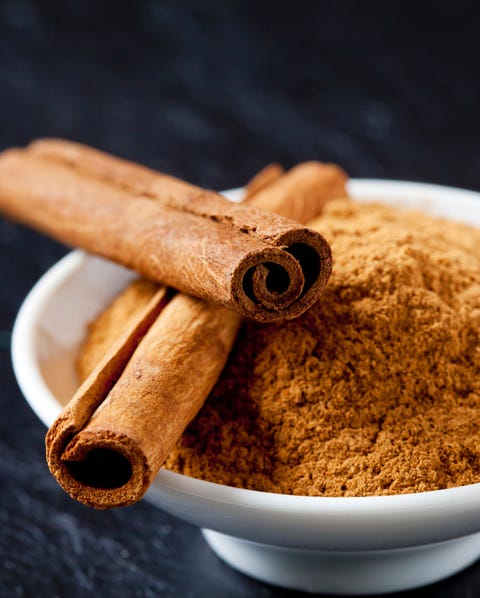
Getty ImagesWestend61
Cinnamon and cardamom
Certain spices, like cinnamon and cardamom, “have been shown to stabilize blood sugar levels, improve insulin sensitivity, and reduce the accumulation of belly fat,” says Kelli McGrane, R.D., of Lose It!
Plus, spices like cinnamon and cardamom add a touch of sweetness to a dish, without adding sugar—which can help it feel even more satisfying.
Per 1 Tbsp cinnamon: 19 cal, 0.10 g fat, 6.29 g carbs, 1 mg sodium, 4.1 g fiber, 0.31 g protein
Per 1 Tbsp cardamom: 18 cal, 0.39 g fat, 3.97 g carbs, 1 mg sodium, 1.6 g fiber, 0.62 g protein
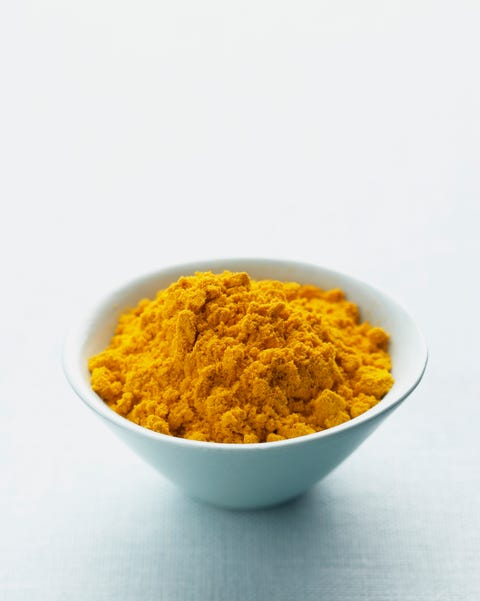
Getty ImagesLew Robertson
Turmeric
Another fat-fighting hero: “Turmeric, which helps to lower inflammation and may prevent growth of fat tissue,” McGrane says.
Sprinkle a little bit of the spice on your dinner to help give it a major flavor boost.
Per 1 Tbsp: 29 cal, 0.31 g fat, 6.31 g carbs, 3 mg sodium, 2.1 g fiber, 0.91 g protein
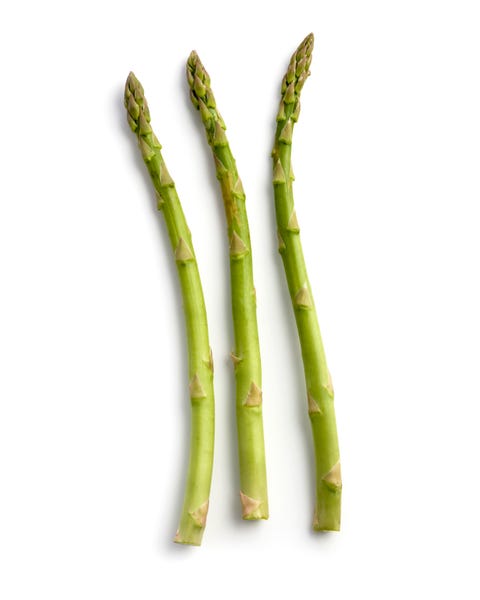
Getty ImagesScience Photo Library
Asparagus
“Asparagus is underrated,” says Tory Armul, R.D. In just one cup of the stuff, you’ll be fueling your body with 2.8 grams of fiber and only 27 calories. What makes it especially great, says Armul, is its surprising amount of protein—one cup has nearly three grams.
Per cup: 27 cal, 0.16 g fat, 5.2 g carbs, 3 mg sodium, 2.8 g fiber, 2.95 g protein
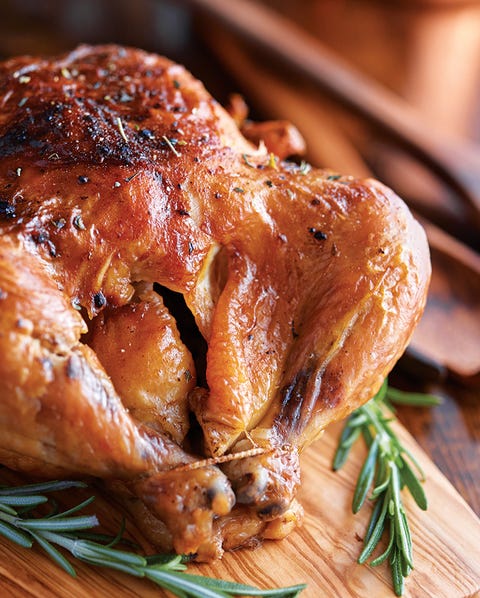
Getty Images
Chicken and turkey
Turkey, chicken, and other lean meats are a great source of protein, so you’ll feel satisfied, not hangry, says Cording.
All animal proteins are also a good source of tryptophan, which is a precursor to the neurotransmitter serotonin. “If you struggle with mood or stress, it’s important to boost the production of serotonin to stabilize your mood, curb emotional eating, and keep stress-induced snacking at bay,” especially when you’re trying to lose weight, says Cording. But when it comes to portions, opt for a 100 gram serving, which is about the size of a deck of cards, for reference.
Per 100 grams of chicken: 107 cal, 1.79 fat, 0 g carbs, 0 g sugar, 67 mg sodium, 0 g fiber, 23.21 g protein
Per 100 grams of turkey: 125 cal, 4.69 g fat, 6.26 g carbs, 3.12 g sugar, 781 mg sodium, 0 g fiber, 15.62 g protein

Source: Read Full Article